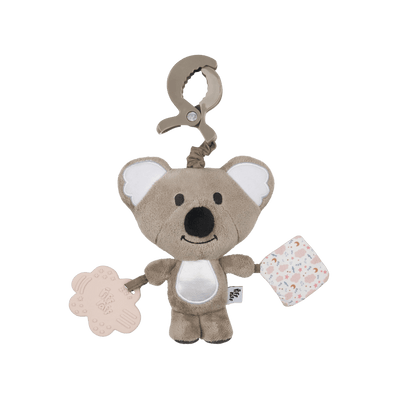Safe Sleep Guidelines for Infants
A – Alone in a clear, separate sleep space (cot/Moses basket).
B – Back to sleep, every time.
C – Cot in your room for at least 6 months.
Extras: Smoke-free, safe temperature (16–20 °C), minimal bedding, breastfeeding, dummy use, and caution with bed-sharing.
1. Back to sleep, for every sleep
Always place your baby on their back to sleep - for both day and night naps. This position is the most effective in reducing the risk of SIDS.
2. Clear sleep space (own cot in same room)
Your baby should sleep in their own clear, flat, firm separate sleep space (cot, Moses basket, or bedside sleeper) in the same room as you - day and night - for at least the first six months.
3. Keep it smoke-free
Avoid smoking during pregnancy and after birth. Never allow anyone to smoke near your baby or where they sleep.
4. Temperature and overheating
Keep your baby’s room at a comfortable temperature of around 16–20 °C to avoid overheating.
5. Minimal bedding, no pillows or soft toys
Only use lightweight bedding, firmly tucked in, up to the baby’s chest - not covering their head. Keep the cot clear of pillows, quilts, bumpers, soft toys, and sheepskins.
6. Feet-to-foot positioning
Position your baby with their feet at the foot of the cot - the “feet to foot” method - to reduce the chance of them wriggling down under covers.
7. Breastfeeding
Breastfeeding provides protective benefits and helps lower the risk of SIDS.
8. Pacifier (Dummy) use
Offering a dummy at sleep time may help reduce SIDS risk - once breastfeeding is well established (around one month old). Stop use between 6–12 months.
9. Avoid bed-sharing - especially in risk scenarios
Bed-sharing increases SIDS risk - especially if either parent smokes, has consumed alcohol or drugs, or is excessively tired. Bedside sleepers are a safer way to keep baby close.
10. Special cases (premature or medical conditions)
Premature babies or those with medical needs may require tailored advice. Always follow the guidance of your healthcare professional.
11. Consistency across caregivers
Ensure that wherever your baby sleeps - at home, with grandparents, or at daycare - these guidelines are consistently followed.
Disclaimer: This information was last updated September 2025. Safe Sleep Guidelines are subject to periodic review and modification based on emerging research. For the most current and comprehensive safe sleep recommendations, please consult The Lullaby Trust or the NHS.




































